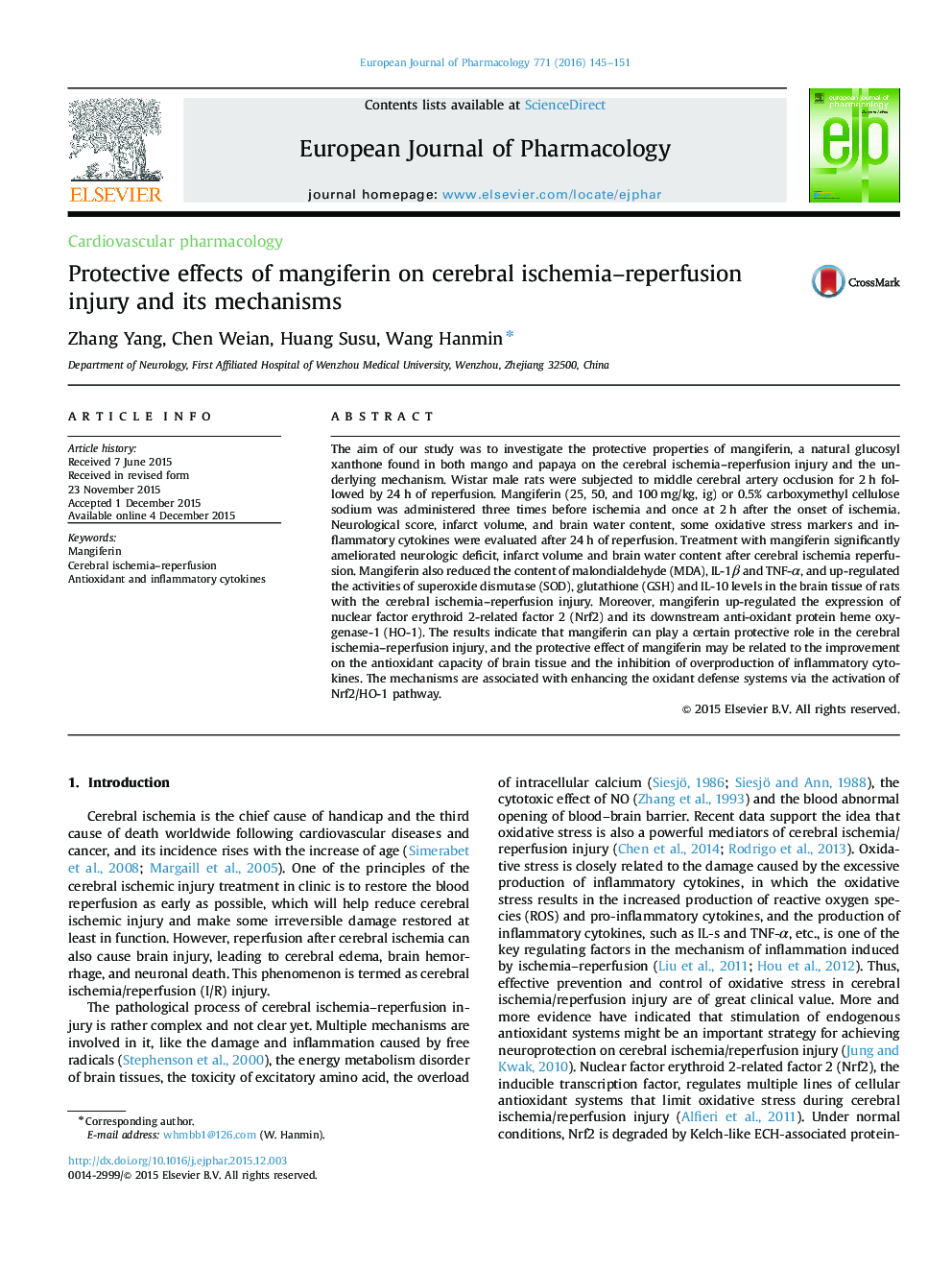| Article ID | Journal | Published Year | Pages | File Type |
|---|---|---|---|---|
| 2531037 | European Journal of Pharmacology | 2016 | 7 Pages |
The aim of our study was to investigate the protective properties of mangiferin, a natural glucosyl xanthone found in both mango and papaya on the cerebral ischemia–reperfusion injury and the underlying mechanism. Wistar male rats were subjected to middle cerebral artery occlusion for 2 h followed by 24 h of reperfusion. Mangiferin (25, 50, and 100 mg/kg, ig) or 0.5% carboxymethyl cellulose sodium was administered three times before ischemia and once at 2 h after the onset of ischemia. Neurological score, infarct volume, and brain water content, some oxidative stress markers and inflammatory cytokines were evaluated after 24 h of reperfusion. Treatment with mangiferin significantly ameliorated neurologic deficit, infarct volume and brain water content after cerebral ischemia reperfusion. Mangiferin also reduced the content of malondialdehyde (MDA), IL-1β and TNF-α, and up-regulated the activities of superoxide dismutase (SOD), glutathione (GSH) and IL-10 levels in the brain tissue of rats with the cerebral ischemia–reperfusion injury. Moreover, mangiferin up-regulated the expression of nuclear factor erythroid 2-related factor 2 (Nrf2) and its downstream anti-oxidant protein heme oxygenase-1 (HO-1). The results indicate that mangiferin can play a certain protective role in the cerebral ischemia–reperfusion injury, and the protective effect of mangiferin may be related to the improvement on the antioxidant capacity of brain tissue and the inhibition of overproduction of inflammatory cytokines. The mechanisms are associated with enhancing the oxidant defense systems via the activation of Nrf2/HO-1 pathway.
